Are you happy to own an active herding dog breed but can’t seem to get them to reach their full potential? Don’t look any further! We will go over a lot of training tips and tricks that are just right for herding dog types in this blog post. Whether you have a Border Collie or an Australian Shepherd as a pet, get ready to release their amazing skills as we reveal the keys to their best potential. Get ready for an exciting trip that will make you and your dog happy.
A Brief Look at Herding Dog Breeds to Reach Their Full Potential
Herding dog breeds have been around for hundreds of years. They were first created to help farms and shepherds group animals. These dogs are smart and easy to train, and they naturally know how to control the movement of animals, which makes them very useful in agriculture.
Herding dogs are still used on farms and fields for what they were originally bred to do, but they are also popular pets because they are loyal, quick, and full of energy. A lot of people who own herding breeds say that their dogs can herd anything, from kids playing in the backyard to a group of friends going for a walk.
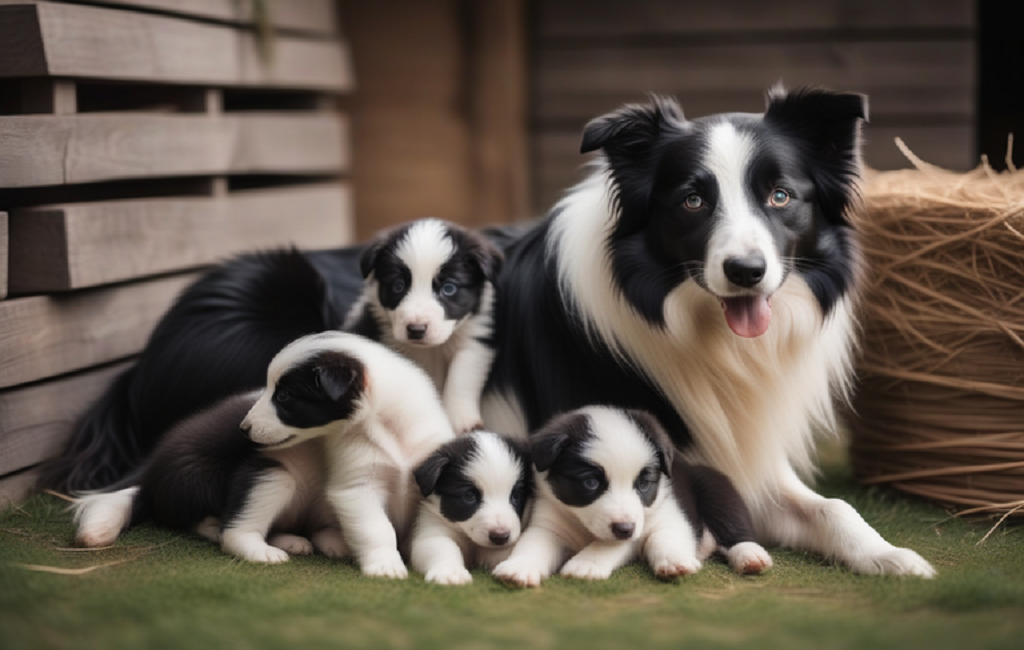
Many different types of dogs are herding dogs, such as border collies, Australian shepherds, German shepherds, cow dogs, and many more. In terms of tracking skills, each breed is different and has its own strengths and weaknesses.
All herding dogs are known for having a strong work ethic. These dogs do best when they are given chores or jobs to do. They also need mental stimulation as well as exercise. If they don’t have enough things to do with their smarts and energy, they can get boring or harmful. This is why it’s so important for people who own these breeds to know what they need and start teaching them early on.
Knowing your dog’s natural abilities for herding is another important part of having a herding dog. Depending on the breed and personality of the dog, these traits may show up in different ways. Some may be more verbal, while others may use physical cues like nudging or circling to keep their “herd” in line. It’s important for owners to be aware of these behaviors and train and socialize their dogs to use them in the right way.
This type of dog is also known for being very loyal and close to its people. They are loving dogs that need to be with people all the time and can get upset if they are left alone for long amounts of time. Because they have worked closely with people in the past, they are often very easy to train and do well in activities like obedience, agility, and tracking.
To sum up, herding dog types are smart, loyal, and hardworking animals that have a natural urge to group. To do well as both working dogs and family pets, they need to be properly trained, socialized, and given ways to use their energy and intelligence. You can keep these types as pets or on the farm, and they will be loyal friends if you take the time to meet their specific needs.
Herding dogs’ history and where they came from:
Herding dogs have been around for thousands of years. In old civilizations like Egypt, Greece, and Rome, these smart and hardworking animals were used to herd sheep.
The Middle East is thought to be where the first herding dog breeds were created around 7000 BC. These dogs were important to nomadic groups because they helped them move their animals from one place to another. It was known that these early herding dogs had a strong ability to drive or group sheep, horses, and other animals without any training.
As society grew and changed, so did the need for herding dogs. During the Middle Ages in Europe, certain types of sheep were bred to do specific jobs, like protecting groups from enemies or driving them over rough terrain over long distances.
As industry grew in the 1800s, farming methods changed a lot, which made more people want herding dogs that were smart and good at their jobs. In many parts of the world, breeding projects were set up to create breeds that could meet these needs. These changes led to the creation of some of the most famous herding dog breeds today, like the Corgi, Border Collie, Australian Shepherd, and German Shepherd.
Herding dog breeds have these traits:
One thing that all herding dog breeds have in common is that they naturally want to work with people. They are very smart and full of energy, which makes it easy for them to do physical tasks. This makes them perfect for hunting and other jobs.
Herding dogs are known for having strong senses to handle and keep animals in line. To move the group in a certain way, they do things like barking, biting, and pacing. This natural urge can show up in the way they treat other animals or kids, making them very protective and dominant.
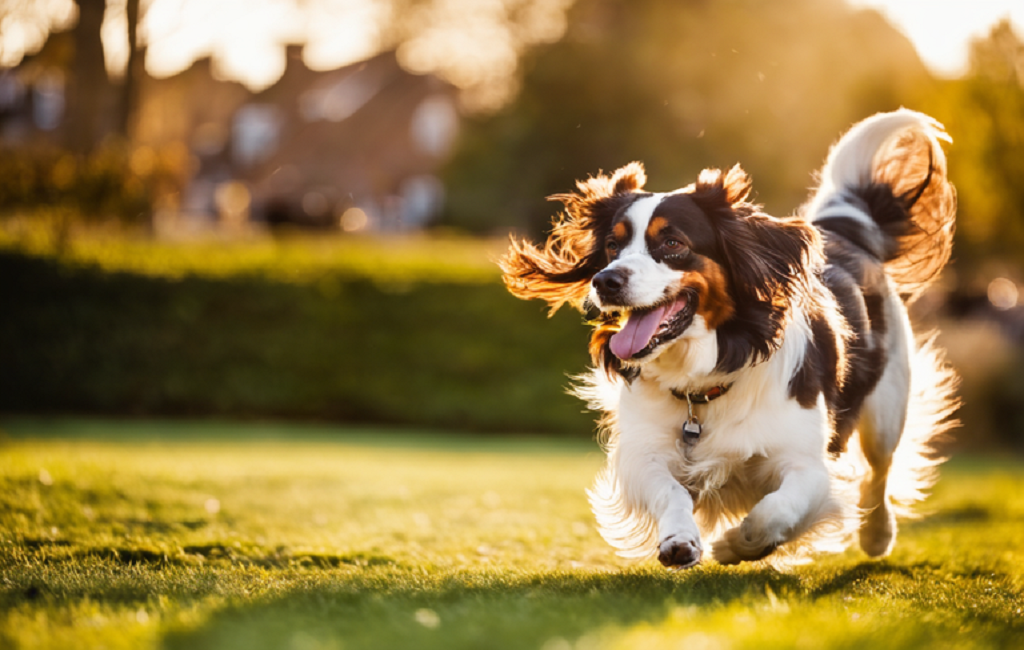
Herding dog types are also very good at fixing problems, being flexible, and having a lot of energy. Because of these traits, they are useful not only for gathering, but also for search and rescue, therapy, and even working with police.
How Herding Dogs Are Used Today:
Herding dogs are still an important part of taking care of sheep today. Farmers depend on these dogs to keep their animals safe from wild animals and to move them quickly between fields.
In addition to their usual jobs on farms and fields, herding dogs are also popular as pets because they are smart, easy to train, and friendly. A lot of breeds that were only used for work are now valued as reliable pets and friends.
More than anything else, the past of herding dogs shows how close people are to animals and how smart and capable these breeds are.
Herding dog breeds have these traits:
1. Herding Behaviors That Come Naturally:
Herding dogs have a natural tendency to group, which is what makes them unique. These dogs were originally bred to help farmers take care of their animals, and that is still their natural nature. They really want to chase, catch, and direct groups of animals, which makes them great farm animals to work with.
2. High levels of energy:
Dogs of the herding breed are known for having a lot of energy and stamina. This is because they were bred to do things like running, jumping, and herding that take a lot of physical exercise. This energy needs to be used correctly by working out regularly and doing fun things.
3. Ability to think:
The brains of herding dogs are very sharp, and they can quickly understand orders and pick up new ones. Over many generations, these dogs have gotten better at this trait because they had to think for themselves while dealing with wild animals in tough settings.
4. High morale at work:
Because they were originally bred to work as working dogs, herding breeds are very hard-working and will do their best at any job they are given. They are always focused on getting things done quickly and carefully, which makes them great training partners.
5. Being loyal:
Though these dogs are very loyal to their owners, they are also very loyal to the whole family or group that they are in charge of protecting or controlling.
6. Being alert:
Herding breeds have sharp feelings that make them great guard dogs against possible danger. They always keep an eye out for strange things and are quick to let their owners know.
7. Ability to train:
Herding breeds are very easy to train because they are smart and driven. They do great at things like training, agility, and tracking because they like to keep their minds active.
8. Qualities of the body:
There are many shapes and sizes of herding dogs, but most of them have the same physical traits, like a powerful build, strong shoulders, and a deep chest that lets them run for long distances. To keep them relaxed while working outside, they also have a coat that can be worn in different ways and doesn’t get damaged by the weather.

9. Strong Drive to Hunt:
Sheep dogs have a strong desire to hunt smaller animals because they were originally bred to work with animals. With the right teaching and education from a young age, this urge can be tamed.
10. Friendly Nature:
Most herding dogs are friendly and like being around people and other animals. This may be different for each dog, though, based on its attitude and teaching experience. It’s important to get them used to new people and places right away by socializing them early on.
Well-known breeds of herding dogs:
Herding dogs come in a lot of different kinds, and each one has its own unique skills and senses. Farmers and ranchers first bred these dogs to help them move animals from one place to another, watch over the group, and do other herding chores. They are still respected for their smarts, speed, and willingness to work hard.
These are some of the most common types of herding dogs you might see:
1. Border Collie: Border Collies are often thought to be the best choice for professional herders because they are very focused and driven. They learn quickly and do really well on agility courses and races.
2. Australian Cattle Dog: These active dogs were first bred in Australia to handle cattle over long distances. They are also called Blue Heelers and Queensland Heelers. They have a lot of energy and need to be busy all the time.
3. German Shepherds are a flexible breed that is praised for their ability to handle animals. They are also used as police dogs, in search and rescue efforts, and as guide dogs for the blind.
4. When it comes to size, the Shetland Sheepdog is smaller than most other herding breeds, but its smarts and energy make up for it. They are great for families because they can easily live in a lot of different places.
5. Pembroke Welsh Corgi: Corgis are brave little workers, don’t let their small size fool you! These dogs were originally bred to handle sheep and horses. They are smart and have strong skills for herding.
6. Australian Shepherd: Despite their name, Australian Shepherds were first bred in the United States, where they were used on farms as all-purpose working dogs. They are very athletic and do great at many things, like herding, agility, and obedience training.
7. Collies were first bred in Scotland to guard and group sheep. They have a long coat that makes them look royal. Because they are friendly and easy to train, they make great family pets.
8. This is an Old English Sheepdog. These shaggy dogs look like they belong in a show ring instead of on a farm, but they are very good at herding sheep. Their unique coats need to be cared for regularly to keep them looking neat.
9. The German Shepherd is a more well-known cousin of the Belgian Malinois, but this breed is actually one of the best herding dogs out there. They are known for having a lot of energy, being quick, and having a strong drive to work.
10. Bearded Collie: Bearded Collies were originally bred in Scotland to be multipurpose farm dogs. They are known for being friendly and good at herding.
Dog, Border
The Border Collie breed of herding dogs is very smart and can do a lot of different things. They were originally bred to be great at herding. Their natural skills, energy, and speed make them great farm dogs. They are also great at lots of other sports, like agility, obedience, tracking, and flyball.
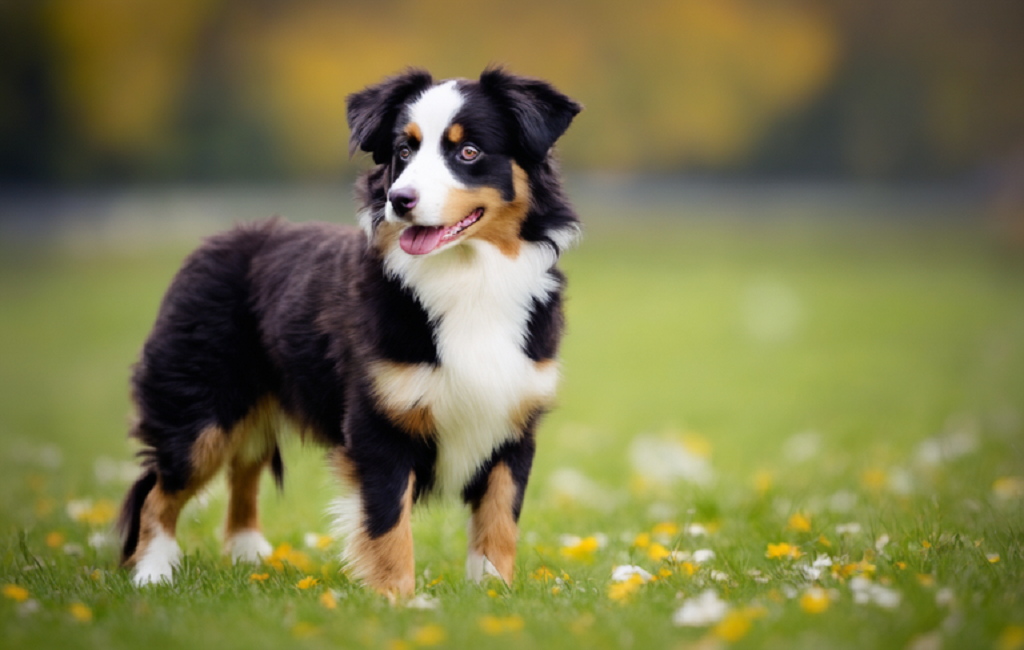
History: Border Collies have been around since the times when they lived near the border between Scotland and England. Shepherds worked together to create the breed because they needed a very skilled dog to take care of their sheep. Over time, these dogs were known for being very focused, having a lot of energy, and being able to handle different scenarios.
Physical Features: Border Collies are strong dogs that are about the size of small dogs. A typical adult man weighs between 30 and 45 pounds, while a typical adult female weighs between 27 and 42 pounds. These animals have two coats, and the undercoat is thick, which keeps them warm in cold weather. The outside coat can be different colors, like black and white (which is the most popular), red merle, blue merle, or multicolored (black, tan, and white). Their ears are a unique shape and stand straight up, which makes them look even more alert.
Behavior: Border Collies are known for being very active and driven dogs that love to be mentally and physically stimulated. Because of this, they make great pets for busy people or families who like to be outside. Because they are smart and have a strong work ethic, they need regular training and tasks to keep their minds active.
When it comes to strangers, these dogs can be shy, but they are very loyal to their families. Another thing they’re known for is being great watchdogs. They are always alert and ready to sound the alarm if something seems wrong.
Health Problems That Could Happen: Border Collies are usually healthy, but like all dogs, they can get some health problems. Hip dysplasia, eye problems (like Progressive Retinal Atrophy), and epilepsy are some of the health problems that Border Collies may have.
Border Collies have a double coat that needs to be brushed regularly to keep it from getting matted and in good shape. Their shedding isn’t too bad all year, but it gets worse when the seasons change. They will also need to be bathed and have their nails trimmed every so often.
Training: Border Collies need to be socialized and trained from a young age because they have strong herding skills and a lot of energy. When these dogs are around things they need to do, they do very well. Because these are sensitive dogs that do best with gentle direction, positive feedback works well with them.
Conclusion: Border Collies are smart, active dogs that are great at many things and will be loyal pets for the right person. They need to be mentally and physically active all the time.
Dog from Australia
Australian Shepherds, sometimes just called “Aussies,” are smart and easy to train herding dogs that come from the western United States. Even though they are called Australian Shepherds, these dogs were not actually bred there. Instead, farmers in the American West developed them because they liked how hard they worked and how naturally they could group animals.
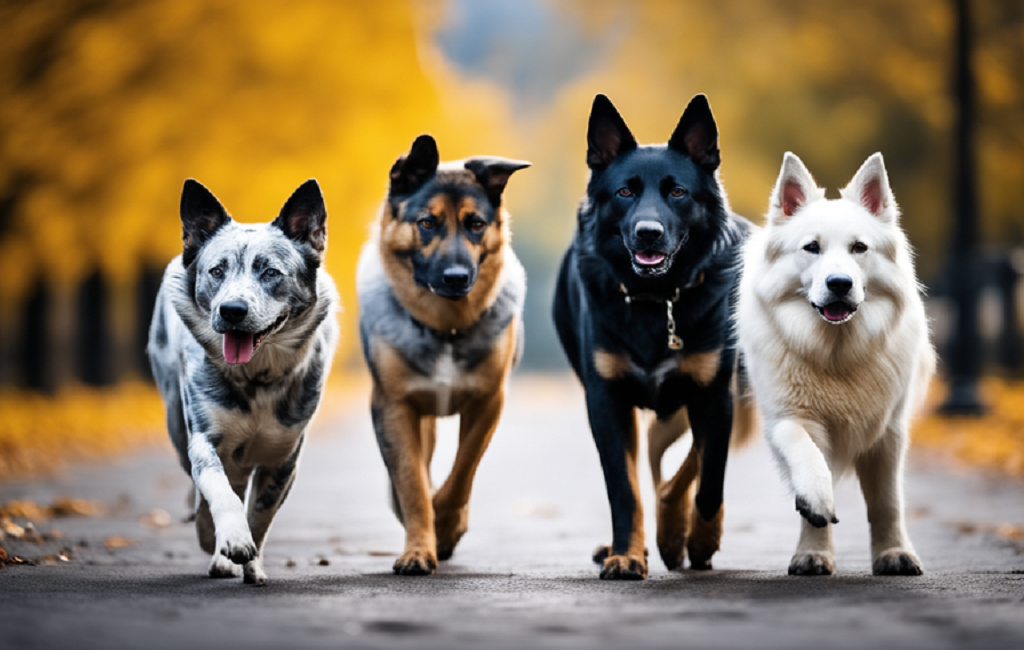
The way they look:
Australian Shepherds have a unique double coat that is about shoulder-length and comes in black, blue merle, red merle, and red. The chest, face, legs, and underside of these animals often have white spots or mottling on their fur. These dogs’ eyes are usually sharp and almond-shaped. They can be different shades of blue or brown. Because they are athletic and have strong muscles, they can move quickly and are good at gathering.
Type of Person:
Aussies are known for being friendly and dependable. People who own them make strong bonds with them, and they are also very close to their families. They may, however, act defensive toward strangers or animals they think could be a threat to their group or family because they are a herding breed.
Tips for Training:
Australian Shepherds are very smart and want to please their owners, so they are great at teaching chores. When you train your Aussie, here are some tips that will help it reach its full herding potential:
1. Start Early: If you want to train your Australian Shepherd, you should start when they are still puppies. They are naturally drawn to herding, but they need to be shown the right way to improve their skills.
2. Use positive feedback. Using positive reinforcement is a good way to train your Aussie. Give them treats, praise, and love when they behave well. This will make them more likely to do what you want them to do again in the future.
3. Stay Consistent: Australian Shepherds do best when they have clear training routines and rules to follow. When you train your dog, be patient and consistent, and it will learn quickly.
4. Include Games for Herding: One of the best ways to train an Aussie to do jobs like herding is to include fun games in their training. You can make a gathering situation with toys or barriers so that your dog can practice their senses in a safe place.
5. Socialize Your Dog: Australian Shepherd dogs should be socialized with people and other animals in a controlled setting from a very young age. This will make them more well-rounded, and when they get older, they will be less likely to act mean or protective around strangers.
Keep in mind that each dog is different, and some may need more time and care to train than others. Australian Shepherds can become very good at herding if they are consistently given positive feedback and are exposed to herding jobs from a young age.
German Shepherd Dog
A well-known and common breed of herding dog is the German Shepherd. These smart and adaptable dogs were first bred in Germany to herd sheep. Since then, they’ve been used in many jobs, like as therapy dogs, police K-9 units, and search and rescue teams.
The German Shepherd’s natural desire to guard is one of the things that makes them unique from other dog breeds. Because of this, they make great leaders and loyal friends. But it also means that they need to be socialized and trained properly so that they don’t become too defensive or violent.
There are a few things you should think about when teaching German Shepherds to herd. These dogs need mental activity first and foremost, along with physical training. They are very smart animals that love to learn new things and figure out how to solve problems.
When raising a German Shepherd, you must always use positive feedback. Instead of hard teaching methods or punishment, these dogs do better with praise and treats. Also, it’s important to be consistent. Tell your dog what to do and do it every time with the same orders and techniques.
The best time to start training a German Shepherd is when they are still puppies. This helps them form good habits right away and also helps them bond with their owners. Getting used to people and other animals is very important at this age to avoid behavior problems as an adult.
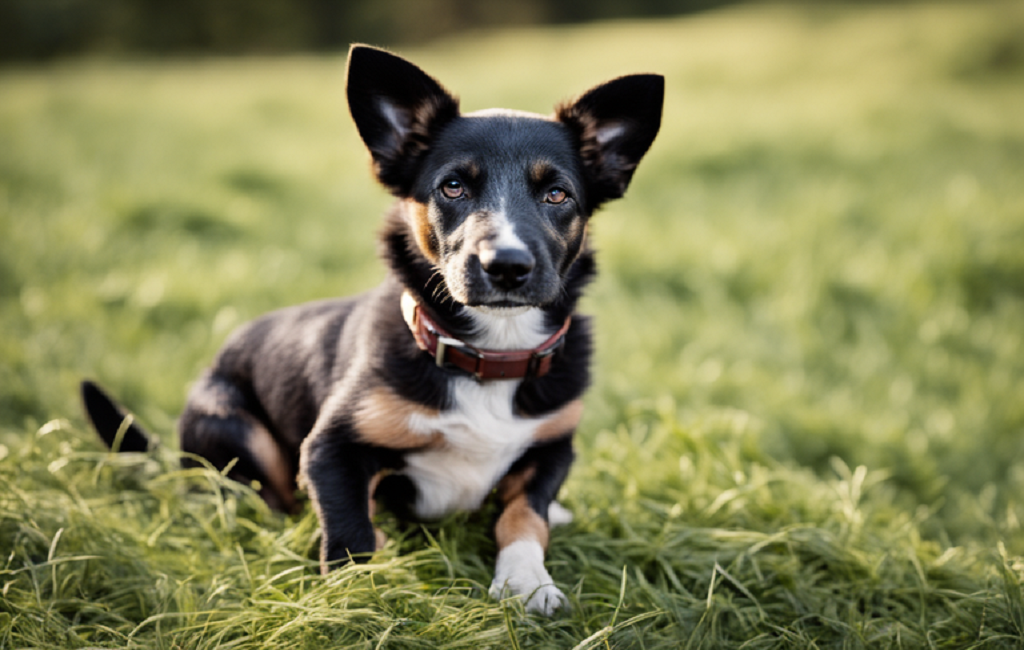
It’s important to know what a German Shepherd wants before you try to teach them how to herd. The group is led by these dogs’ bodies, not their barks like some other breeds do. They move in straight lines or big loops.
Sheep or other animals should be used for herding exercises, and they should be done in a controlled setting with the help of an experienced teacher. Start by telling your dog simple things like “come-by” or “away” to show them where to go. Your German Shepherd might need some time, care, and a lot of practice to learn how to do these things well.
It’s important to remember that every dog, no matter what breed, will have its own attitude and set of features. It’s possible that some German Shepherds are better at handling than others. Because of this, not all dogs of this breed will be good herding partners.
In conclusion, German Shepherds are very smart and adaptable dogs that are great at many things. They can also learn how to group well if they get the right training and get to know other animals from a young age. But before you try any major herding jobs, you should work with an experienced teacher and know what your dog is capable of.
Figuring out what herding dogs are naturally inclined to do
Natural traits are a big part of how herding dogs act and what they can do. Over hundreds of years of training for specific reasons, like leading and protecting animals, these traits have grown stronger. To train and work with herding dogs well, you need to understand these natural traits.
The Need to Herd
One of the strongest traits in herding breeds is to follow the flock. They were born with this trait, which makes them very good at gathering, holding, and moving groups of animals. Different breeds and individuals of dogs can show this drive in different ways, but some common behaviors are looking (staring intensely at the animals), pacing or moving around the group, biting at heels or sides, and barking or making noise.
It’s important to remember that this drive doesn’t always mean being mean to the animals being moved. It’s true that many herding breeds are known for being friendly with animals. But if their managers don’t train them well and tell them what to do, this drive can become a problem. For example, a herding dog’s strong desire to group could lead them to chase cars or other things that aren’t animals if they aren’t trained properly.
Using Your Senses
Compared to other kinds, herding dogs also have very good sense of touch. Because they have such good senses, they can pick up on small changes in sound or movement around them. Because they can see things better, they can predict possible dangers for the flock they are in charge of guarding.
They can also read and react to the body language of the animals they are guiding because their senses are so sharp. Based on how the animals behave, this lets them decide in an instant how and where to move the animals.
Drive to Catch Prey
A strong desire to hunt is another trait that many herding breeds have. The drive to chase and catch small animals is different from the drive to herd because it’s not about ruling big groups of animals. These dogs were first bred with this trait to help them keep their flocks safe from danger.

As with any natural urge, herding dogs with a high food drive need to be trained and managed properly. Their desire to chase after small animals can get them into trouble or hurt other animals if they don’t get the right help.
Smart people who can solve problems
Herding breeds are known for being smart and good at fixing problems. They weren’t just bred to be strong; they were also bred to be able to think quickly and change their minds when things got tough. They had to be able to think for themselves and make good decisions without regular advice from their masters because they were working dogs that were in charge of big groups of animals.
Some of these types’ intelligence can show up as stubbornness or willfulness if they don’t get enough mental exercise and training. Their natural ability to solve problems, on the other hand, makes them very good at their jobs when used in the right way.
In short, herding dogs are a special type of dog with a lot of natural abilities that have been trained over hundreds of years to help them work with animals. Knowing about these traits can help dog owners and trainers train and care for these dogs better, which can lead to a healthy and happy relationship between person and dog.
How to train a herding dog:
1. Start training early. You should start training your herding dog as soon as possible because it helps shape their behavior and abilities. There is a natural urge in these types to group, but it is important to use this energy in the right way.
2. Set yourself up as the boss of the pack. Herding dogs are known for being independent and having strong wills. You should set yourself up as the pack boss right from the start. Keeping your dog under control during training lessons and stopping them from doing bad things will be easier if you do this.
3. It’s important to socialize your herding dog because they can be defensive and aggressive, especially around their own kind. Socialization from a young age is important to keep animals from being mean to humans or other animals. You can help your dog feel more comfortable around new people, places, and animals by introducing them to them in a controlled setting.
4. Use positive feedback. Positive reinforcement is the best way to train any breed of dog, including herding dogs. For these working types, methods that are built on rewards, like treats, praise, and playing, work well without causing stress or fear.
5. Give them a job. Because herding dogs were bred to work, they do best when they have something to do. This could be anything from going after things to learning tricks to taking part in agility classes. These activities will keep them mentally and physically busy by letting them follow their natural urges.
6. Be patient and consistent: It can be hard to train a herding dog at times, so it’s important to be patient and consistent the whole time. These dog types are very smart and can learn new orders quickly. However, they also have a strong will and may push the limits. To avoid misunderstanding, train your dog often and for short periods of time, and always use the same orders.
7. Get professional help if you need it: If you are having trouble training your herding dog, don’t be afraid to get help from a skilled teacher who specializes in herding dogs. You can get advice from them on the best ways to train these dogs and talk to them about any behavior problems you may be having.
You should remember that every dog is different and has its own personality, so it might take some trying and error to find the best ways to train your herding breed. Positive rewards, care, and consistency will help you train your herding dog to be a happy and well-behaved pet.
Setting up leadership and control
Setting rules and being in charge are very important when training herding dog breeds. These smart and active dogs need a strong boss to help them do what they were bred to do, which is work. If you don’t keep an eye on and lead your herding dogs, they can get sidetracked, disobey, and even act aggressively.
Here are some ways to teach your herding dog to follow your lead and be controlled:
1. Keep things the same: Herding dogs love routines and being the same. For food, walks, playing, and training, make sure you stick to a plan. Follow this plan to show your dog that you are in charge and earn his trust.
2. Use positive reward. Treats, praise, and toys that are used for positive reinforcement work best with herding dogs. Reward them right away with something they enjoy when they behave well or follow your instructions properly. This will encourage them to do it again.
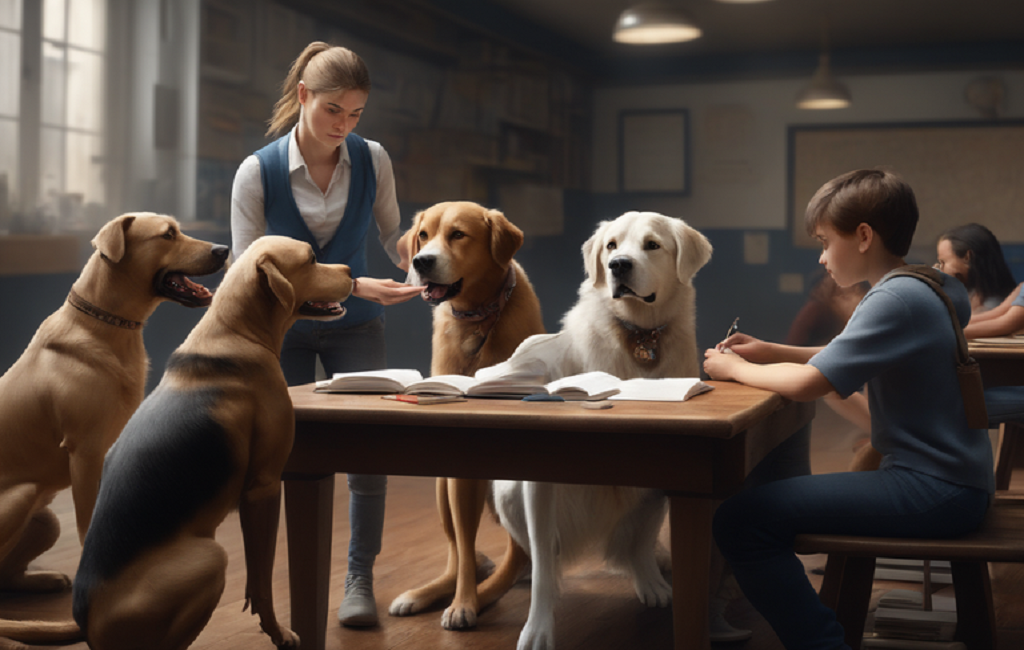
3. You should be strict but fair with your dog. As the pack leader, you should stick to your rules and limits, but you should also be fair to your dog. When you tell your pet what to do, use a strong voice, but don’t hit or punish them too hard, as this can hurt your relationship with them.
4. Set limits: Because herding dogs have a strong urge to chase moving things, it’s important to set limits for them right away during training. This could mean using fences or leads when they play outside or teaching them “stay” and “leave it” inside the house.
5. To get control over your herding dog, you need to practice obedience training. Teaching basic obedience commands like “sit,” “stay,” and “come” is very important. Not only will these orders make them behave better, but they will also help them understand that you are the leader.
6. Exercise both the mind and the body. Herding dogs have a lot of energy and need daily mental and physical stimulation to stay calm and happy. To keep their energy in check, give them fun things to do like fetch, agility courses, or advanced obedience training.
7. Socialize them: From a young age, exposing your herding dog to different people, animals, and places will help them learn how to get along with others. A dog that has been socialized is less likely to act aggressively and can be easier to handle in different situations.
You can become the leader of your herding dog’s pack and make sure they stay in charge during herding exercises or other activities by using these techniques. For the best results, remember to always be patient, consistent, and positive when you train.
Techniques for Positive Reinforcement
Positive reinforcement is a strong way to train dogs of all breeds, but it can be especially helpful for herding breeds. When rewarded for good behavior, these smart and eager-to-please dogs learn quickly and thrive on positive feedback.
This idea behind positive reinforcement is very simple: when you reward a behavior you want to see more of, it will be more likely to happen again. The goal of this method is to create a strong bond between the owner and the herding dog, as well as a positive connection between the dog and certain commands or tasks.
Here are some techniques for using positive reinforcement that work well with herding dog breeds:
1. Most of the time, treats are used as a form of positive reinforcement. If your dog likes small treats that they can bite, give them one right after they do what you want them to do. This will help them remember the action and the treat, which will make them more likely to do it again.
2. Verbal praise: Along with treats, praise can also work well as a form of positive reinforcement. Herding dogs like to hear “good job” or “well done.” When you praise them, make sure you use an enthusiastic tone and do it over and over again so they know they are doing a good job.
3. In addition to verbal praise, you can also use physical affection as a reward during training. For example, you can pet your dog or rub its belly. Most herding dogs are very social and love being around people, so this kind of positive reinforcement can help you bond with your dog even more.
4. For many herding breeds, playtime is a great way to get them to do things. Give your dog a favorite toy or play fetch as a reward for being good. Your dog will also get mental and physical exercise from this, which is good for their health in general.
5. Clicker training is another good way to train dogs with positive reinforcement that works well with herding dogs. A clicker is a small device that makes a clicking sound when pressed. You use it to record the exact moment your dog does what you want them to do. When a treat comes after the clicker, the dog learns that the sound means a treat.
How to Use Positive Reinforcement to Get Results
Be consistent: When using positive reinforcement techniques, it’s important to be consistent. To keep your herding dog from getting confused, make sure that everyone in your family uses the same commands and treats.
Timing is very important: When using positive reinforcement, timing is very important. You should give your dog the treat right away after they do what you want them to do so they know what you want them to do.
Starting with easy tasks is the best way to start any training program. As your dog gets better, you can add more difficult tasks. This will boost your confidence and help you succeed.
Be patient: Positive reinforcement takes time and patience, especially when working with herding dogs that might pick up on your feelings. Your dog will feel more at ease if you stay calm and positive while you train him.
Change things up: You can keep your herding dog interested and motivated by giving it different rewards. Let your dog play, get treats, and be praised to keep things interesting.
Any herding dog breed can be trained with positive reinforcement in a way that is both gentle and effective. You can build a strong bond with your dog and teach them important skills that will make them a well-behaved pet if you use these methods consistently. During the training, don’t forget to be patient, believe in yourself, and have fun!
Common Problems and Ways to Fix Them
The fact that herding dogs naturally want to herd animals makes training them very hard. This can show up as behaviors like barking too much, biting at heels, and following other pets or people around. These instincts are deeply ingrained in these breeds, so it’s better to learn how to work with them than to try to get rid of them completely.
These are some problems that often come up when training herding dog breeds, along with some ideas for how to solve them:
1) Using Your Herding Instinct: As we already said, herding dogs have a strong instinct to control how other animals move. This is a good trait for people who work on farms or ranches, but it can be a problem in a home. It’s important to give your herding dog a lot of mental and physical exercise to help it deal with this problem. Do things with them, like agility courses or fetch games, that let them use their natural instincts without getting out of hand.

2) Barking too much: As part of their herding behavior, many herding dogs bark too much. People who own the property may find this annoying, especially if they live close to neighbors. One way to solve this problem is to teach your dog the “quiet” command when they are not barking. When they stay quiet after being told to, give them treats and praise. Make sure your dog gets enough exercise and mental stimulation as well. Too much barking can also be caused by a dog having too much pent-up energy.
3) Biting and chasing: Another natural thing that herding dogs do is bite or chase people or other animals on their heels. If your dog starts biting small children or older family members, this could be dangerous. First, teach your dog the “leave it” command to solve the problem. This way, you can take their attention away from the behavior and put it on something else. Additionally, make sure that your dog is getting enough mental and physical stimulation to avoid acting out like this because they are bored.
4) Practice getting along with other pets: Herding dogs have a strong prey drive, which means they might see cats or rabbits as prey to herd. As soon as possible, you should get your herding dog used to other pets and teach them the right way to behave around them. When your herding dog and smaller pets are together, you should always watch them until you are sure they can get along well.
5) Anxiety about being alone: Herding dog breeds are known for being very devoted and attached to their owners. This can make them anxious when you leave them alone, which can show up as destructive behaviors like chewing or barking too much. To get around this problem, slowly teach your dog to be okay with being alone for short periods of time. Leave them for a few minutes at first, and then leave them for longer and longer. Make sure they get enough exercise before you leave, and give them toys and treats to keep them busy while you’re gone.
To train a herding dog breed, you need to be patient, consistent, and aware of their natural instincts. These dogs can be loving and well-behaved pets if they get the right training and socialization. You might also find it helpful to get help from a professional trainer or behaviorist for any problems you are having with your herding dog.
How important
It’s very important for herding dog breeds to get the right training. These intelligent, high-energy canines were bred for a specific purpose – to work alongside their human counterparts to herd and protect livestock. Without proper guidance and training, these natural instincts can lead to undesirable behaviors such as nipping, chasing, and herding humans or other animals.
First and foremost, training is important for the safety of both the dog and those around them. Herding dogs are known for their high energy levels and drive to chase after moving objects. This behavior can quickly become dangerous if not properly managed. Without adequate training, herding dogs may chase after cars or other animals on walks or in open spaces, potentially causing harm to themselves or others.
Additionally, proper training helps develop a strong bond between the dog and its owner. As highly social creatures, herding breeds thrive on companionship and need a sense of purpose to be truly happy. Training provides an opportunity for owners to build trust and establish a clear communication system with their dogs. A well-trained herding dog will have a deeper understanding of its role in the pack hierarchy and will be more responsive to commands from its owner.
Training also plays a vital role in channeling the natural instincts of herding dogs towards positive behaviors. With their inherent instinct to herd livestock comes a strong desire for mental stimulation and physical exercise. Through training activities like agility courses or advanced obedience tasks, these needs can be fulfilled while also developing discipline, control, and focus in the dog.
Without proper training, herding dogs may also exhibit destructive behaviors, such as excessive barking, digging, or escaping. These behaviors are often a result of boredom and lack of mental stimulation. By providing structured training sessions and engaging activities, owners can prevent these issues from arising and ensure that their herding dog is content and well-behaved.
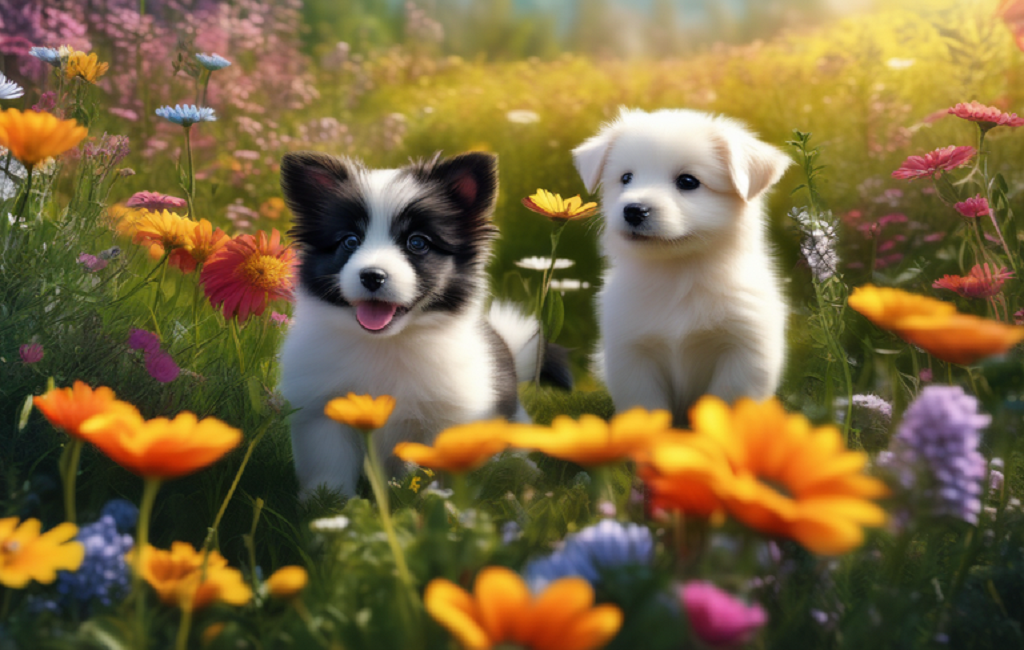
Overall, proper training is crucial for the well-being and happiness of herding dogs. It not only helps prevent potential safety concerns but also strengthens the bond between owner and dog while promoting healthy behaviors and meeting the dog’s needs for socialization, physical activity, and mental stimulation.
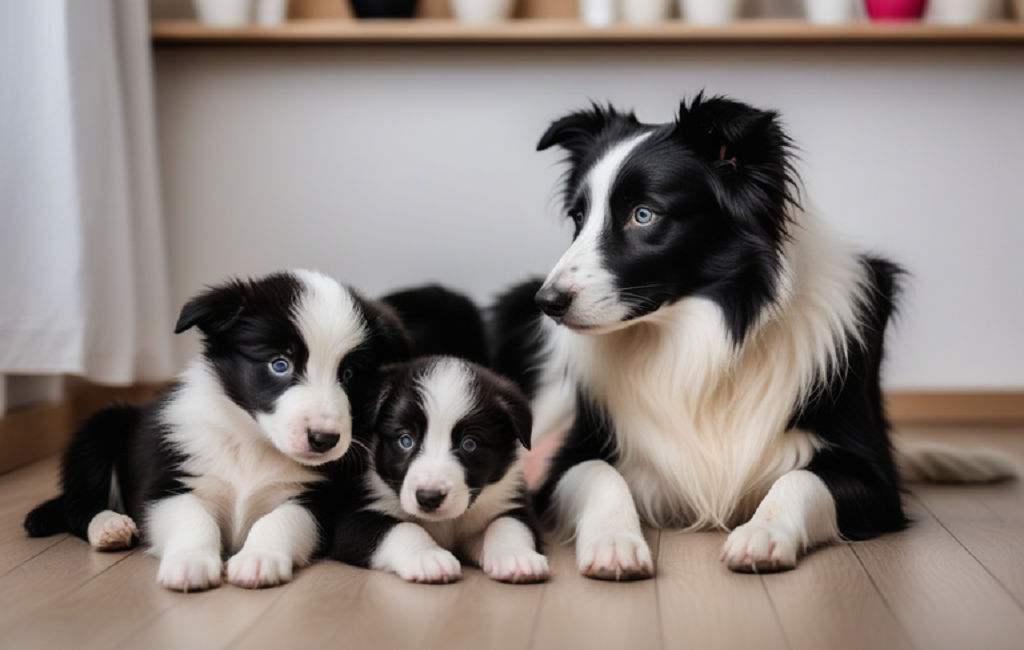
2 thoughts on “How to Train Herding Dogs to Reach Their Full Potential”